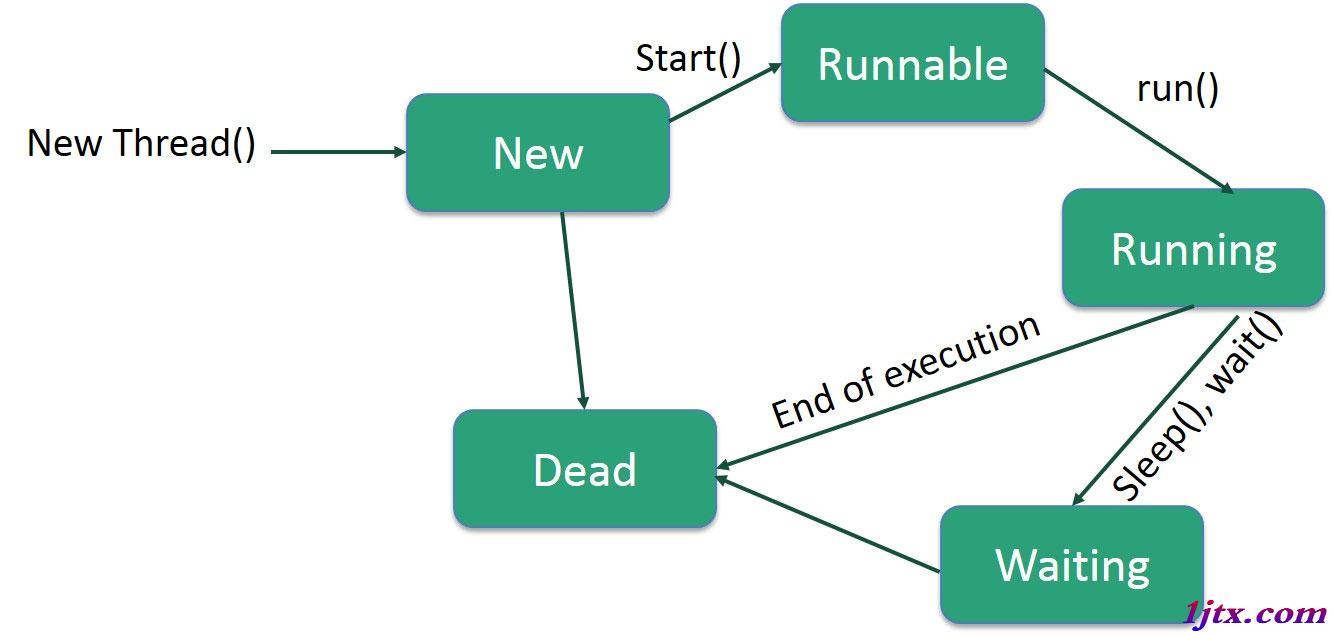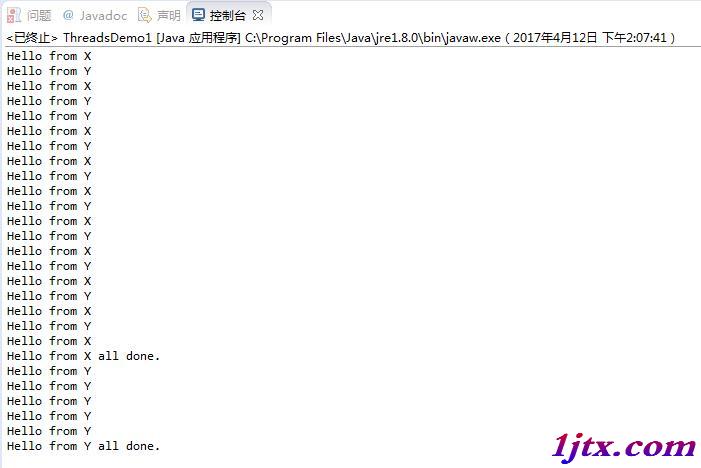Java實現在不同線程中運行的代碼實例。本站提示廣大學習愛好者:(Java實現在不同線程中運行的代碼實例)文章只能為提供參考,不一定能成為您想要的結果。以下是Java實現在不同線程中運行的代碼實例正文
本文實例講述了Java實現在不同線程中運行的代碼。分享給大家供大家參考,具體如下:

start()方法開始為一個線程分配CPU時間,這導致對run()方法的調用。
代碼1
package Threads;
/**
* Created by Frank
*/
public class ThreadsDemo1 extends Thread {
private String msg;
private int count;
public ThreadsDemo1(final String msg, int n) {
this.msg = msg;
count = n;
setName(msg + " runner Thread");
}
public void run() {
while (count-- > 0) {
System.out.println(msg);
try {
Thread.sleep(100);
} catch (InterruptedException e) {
return;
}
}
System.out.println(msg + " all done.");
}
public static void main(String[] args) {
new ThreadsDemo1("Hello from X", 10).start();
new ThreadsDemo1("Hello from Y", 15).start();
}
}
代碼2:
package Threads;
/**
* Created by Frank
*/
public class ThreadsDemo2 implements Runnable {
private String msg;
private Thread t;
private int count;
public static void main(String[] args) {
new ThreadsDemo2("Hello from X", 10);
new ThreadsDemo2("Hello from Y", 15);
}
public ThreadsDemo2(String m, int n) {
this.msg = m;
count = n;
t = new Thread(this);
t.setName(msg + "runner Thread");
t.start();
}
public void run() {
while (count-- > 0) {
System.out.println(msg);
try {
Thread.sleep(100);
} catch (InterruptedException e) {
return;
}
}
System.out.println(msg + " all done.");
}
}
代碼3:
package Threads;
/**
* Created by Frank
*/
public class ThreadsDemo3 {
private int count;
public static void main(String[] args) {
new ThreadsDemo3("Hello from X", 10);
new ThreadsDemo3("Hello from Y", 15);
}
public ThreadsDemo3(final String msg, int n) {
this.count = n;
Thread t = new Thread(new Runnable() {
public void run() {
while (count-- > 0) {
System.out.println(msg);
try {
Thread.sleep(100);
} catch (InterruptedException e) {
return;
}
}
System.out.println(msg + " all done.");
}
});
t.setName(msg + " runner Thread");
t.start();
}
}
eclipse運行結果如下:

希望本文所述對大家java程序設計有所幫助。